A function assigns exactly one element of a set to each element of the other set. Functions are the rules that assigns one input to one output. The function can be represented as . is called the domain, and is called the co-domain.
Figure 1: Relation map between domain , and co-domain :

Range
The elements of the co-domain that are participating in the function is called range. For example, in the following figure:
Figure 2: Relation map between domain , and co-domain :

The range of the function are only those elements participating in the function. The range is:
It is important to note that, any range is a subset of the co-domain, i.e.,
where, is the range, and is the co-domain.
Example 1: State if the following are functions or not.
-
, where .
This is not a function, as for , the function is not defined.
-
, where .
This is not a function, as for any negative value of , the function is not defined.
-
, where .
This is not a function, as there are two possible values for , A function should only have, or point to one value.
Example 2: Given two sets, , and . Draw the function diagram and determine whether, the relation is a function or not. If it is a function, determine the range, domain and co-domain, for the following:
(1) ,
(2) .
Solution
-
The relation map for the function is:
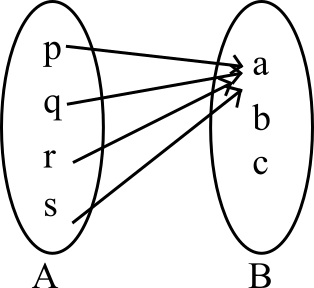
It is a function.
Range,
Domain,
Co-domain,
-
The relation map for the function is:
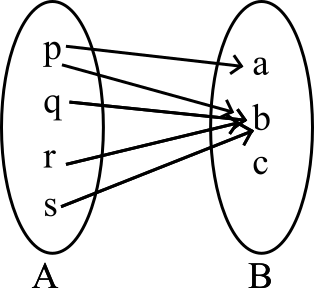
It is not a function, since returns two different values.
Types of Functions
One to one function: Injective function
A function is said to be one to one function if different elements of have different images in .
Figure 3: Relation map between an one to one function of and :
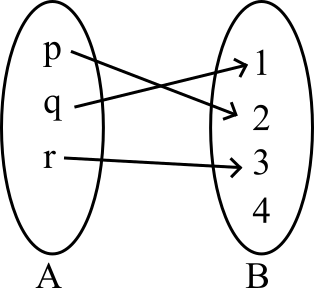
Onto function: Subjective function
A function is said to be onto function if every element of is an image of some element of , i.e., the range of is equal to its co-domain.
Figure 4: Relation map between an onto function of and :
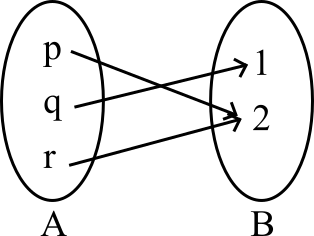
One to one correspondent function: Bijective function
A function is called one to one correspondent function if the function is both one to one and onto function.
Figure 5: Relation map between an one to one correspondent function of and :
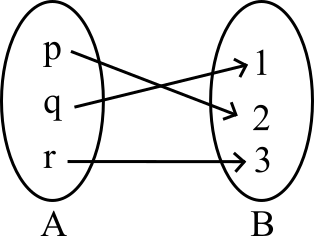
Composition of a Function
Let and be two function such that range of is a subset of domain of , then a new function , called the composition of and may be defined as:
Figure 6: Relation map for composition of a function between , , and :
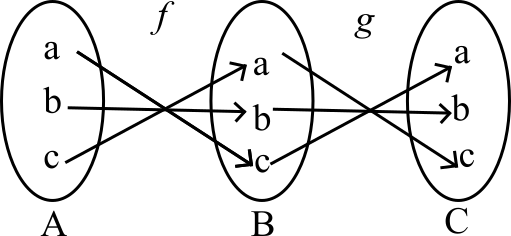
For :
For :
Example 3: Let be a function defined by , and be a function defined by . Compute and and find if they are equal or not.
Solution:
and,
It is found that:
Example 4: Let , and . Find out , and .
Solution:
and,
Example 5: Let . Find .
Solution:
Example 6: Let , , and . Find , when .
Solution:
When,